Dependence of serpentinization efficiency on the initial conditions of planetesimal formation in the early Solar System
- 1Konkoly Observatory, Research Centre for Astronomy and Earth Sciences, Konkoly Thege 15-17, H-1121 Budapest, Hungary, MTA Centre of Excellence
- 2Eötvös Loránd University, Faculty of Science, Pázmány P. st. 1/A, 1171 Budapest, Hungary
- 3ELTE Eötvös Loránd University, Institute of Physics, Pázmány P. st. 1/A, 1171 Budapest, Hungary
We only have indirect information on the internal material properties and structure of small icy bodies in the Solar System, coming from the analysis of meteorites and observations of near-Earth comets. Examination of comets can provide information on the composition of trans-Neptunian objects as they originate primarily in the Kuiper Belt and the Oort Cloud.
In order to infer the internal structure we need to know the dominant heat sources in the small icy bodies to determine the extent of heat production at each stage of their evolution, and their internal transformations they may have come through. The dominant internal heat sources of small icy bodies during their evolution are:
- accretion heat from the formation process;
- radioactive heating in the silicate component due to the decay of the short-lived radiogenic isotope 26Al (in our Solar system);
- exothermic chemical reactions such as serpentinization;
- differentiation energy released when the nucleus is formed;
- tidal heating by large moons or in binary systems.
In this work, we focused on the early evolution, and our heat evolution model is based on the serpentinization reaction (Farkas-Takács et al. 2022). It takes into account the accretion energy as the initial temperature and the radiogenic decay of 26Al as the internal heat source during the process.
The serpentinization processes require the existence of Mg-pyroxenes (enstatite, MgSiO3), Mg-rich olivine (forsterite, Mg2SiO4), and liquid water in the interior of the planetesimal. The following reaction shows the stoichiometric equation of the formation of serpentinite (Mg3Si2O5(OH)4):
Mg2SiO4 + MgSiO3 + 2H2O -> Mg3Si2O5(OH)4
We examined what changes occur when the initial temperature distribution is inhomogeneous and the surface is warmer (Fig. 1) compared to the homogeneous initial temperature distribution. The serpentinization process is faster in the core independently of the initial conditions due to the higher lithospheric pressure.
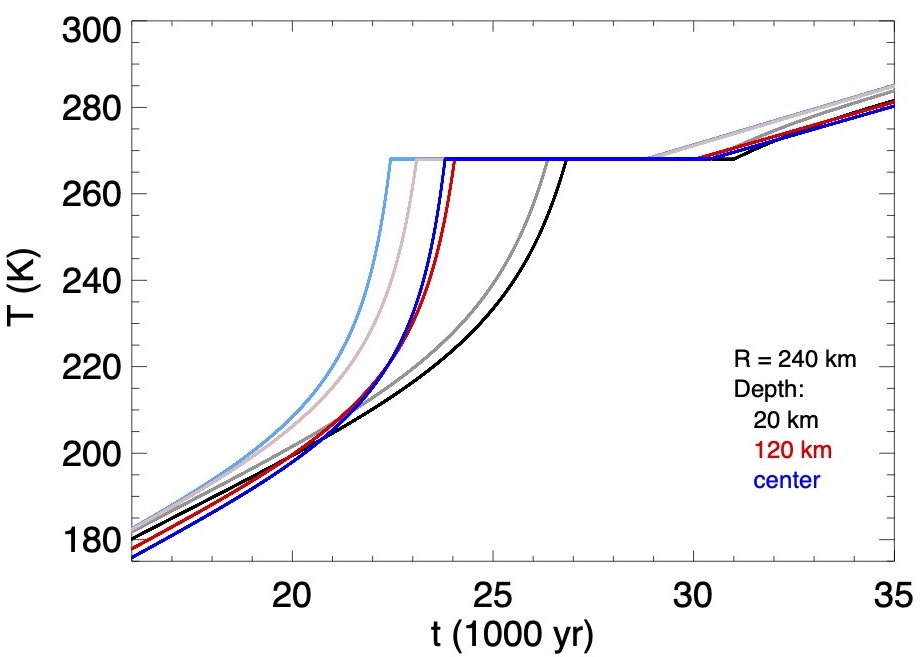
Figure 1: Thermal evolution of a planetesimal of R=240km with an outward temperature gradient at the start, represented by curves with 'normal' colors. The 'pale' colors correspond to the same object/layer, but assuming a homogeneous temperature distribution at the start of the calculations.
We studied another case when the initial temperature distribution was inhomogeneous and the formation occurred in two steps (Fig. 2). In this test, an object formed with a radius of 160km, and τf=10,000yr later the formation was completed and the object reached a final radius of 320km. During the time between the two formation/accretion events, the object may have warmed up both from radiogenic decay and serpentinization. We assumed the first formation even ts=0, the maximum 26Al heat production date, and three 26Al half-life later. The final object is built on the warm core in the second accretion event.
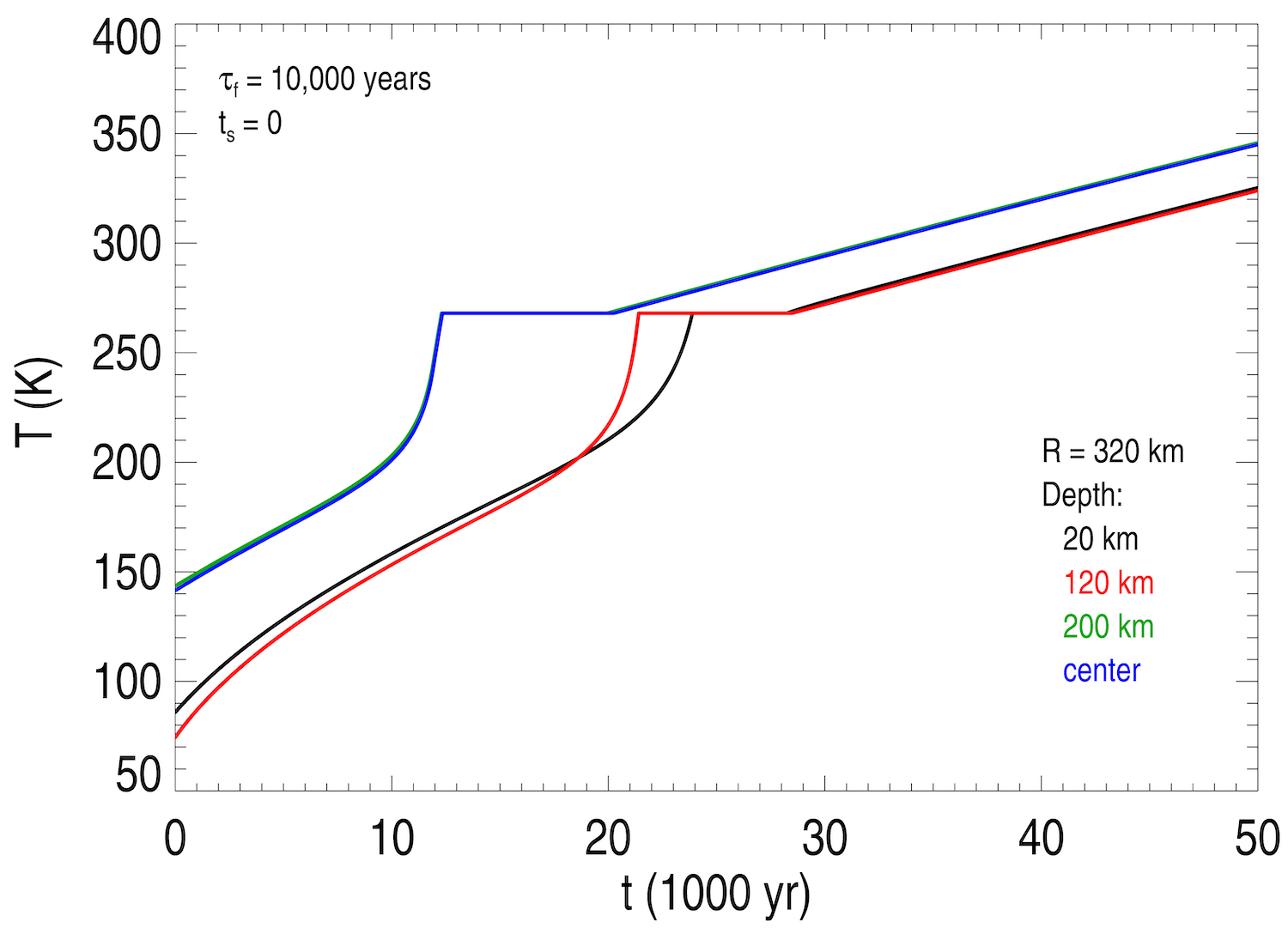
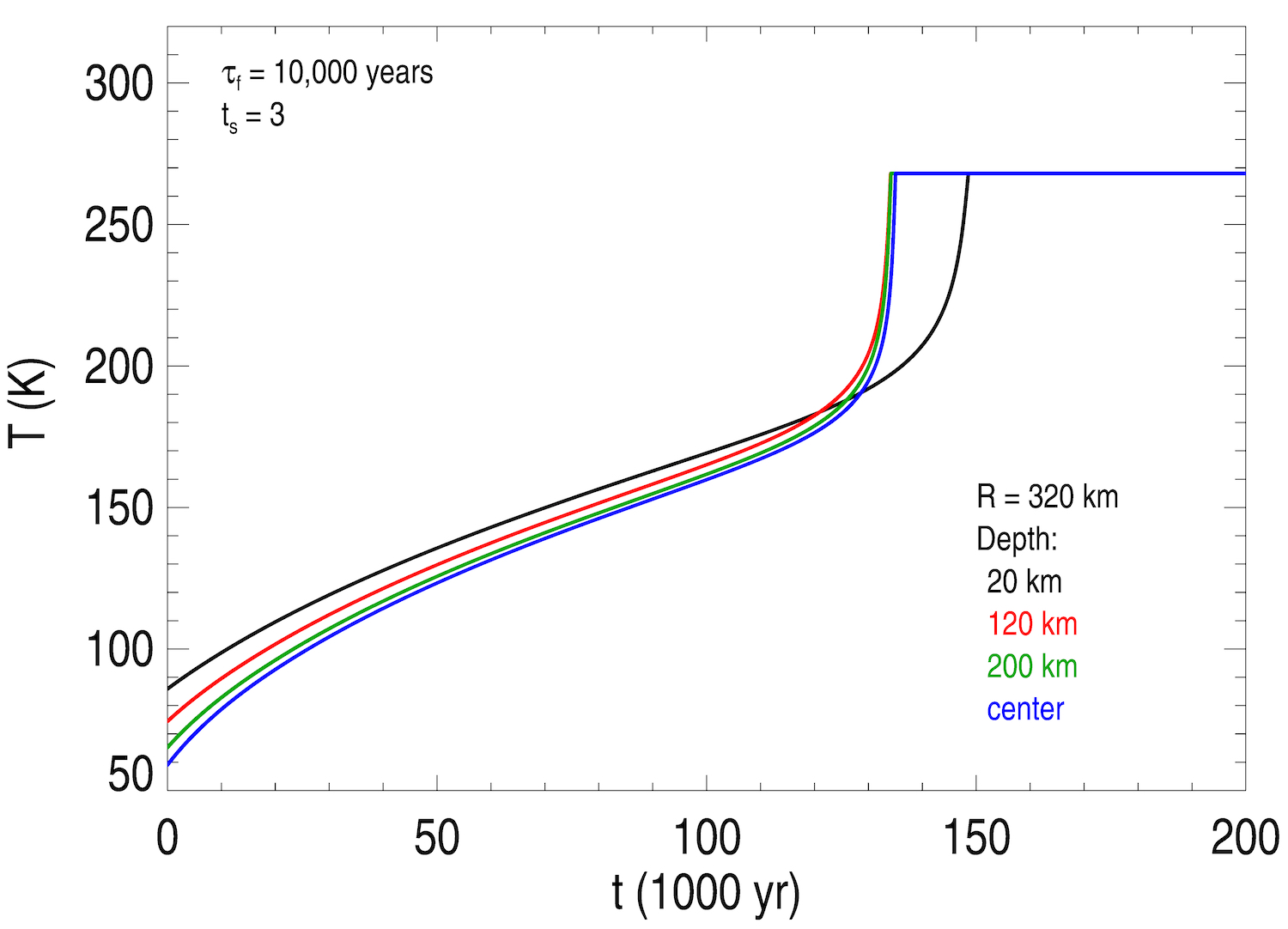
Figure 2: The temperature evolution obtained in models with a two-phase formation scenario. The first formation/accretion event is followed by another event in τf=10,000 yr, and the first formation event occurs early, at the maximum of the radiogenic heat production of 26Al (ts=0, left side) and on the right the first formation event occurs three 26Al half-life later (ts=3).
We also examined what the critical temperature is which is needed to effectively start the serpentinization reaction with 10 different olivine-to-water ratios. The test object had 400 km radius and the process started when the radiogenic heat production of 26Al was at its maximum (ts=0). The critical temperature is strongly dependent on the pressure as expected (Fig. 3 left panel), and this dependence can also be seen in serpentinization time (Fig. 3 right panel). The reaction time at a given pressure is also strongly dependent on the composition.
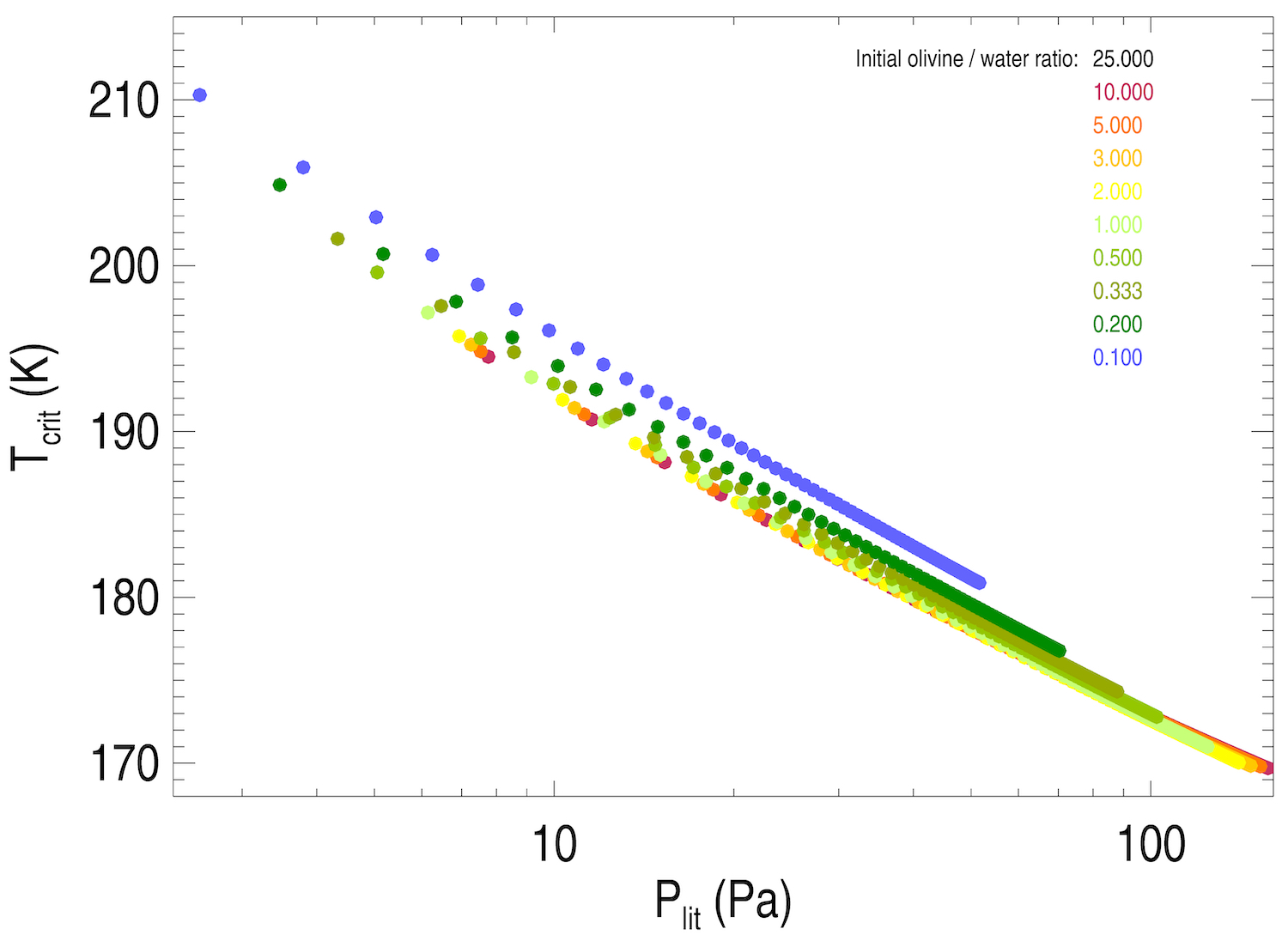
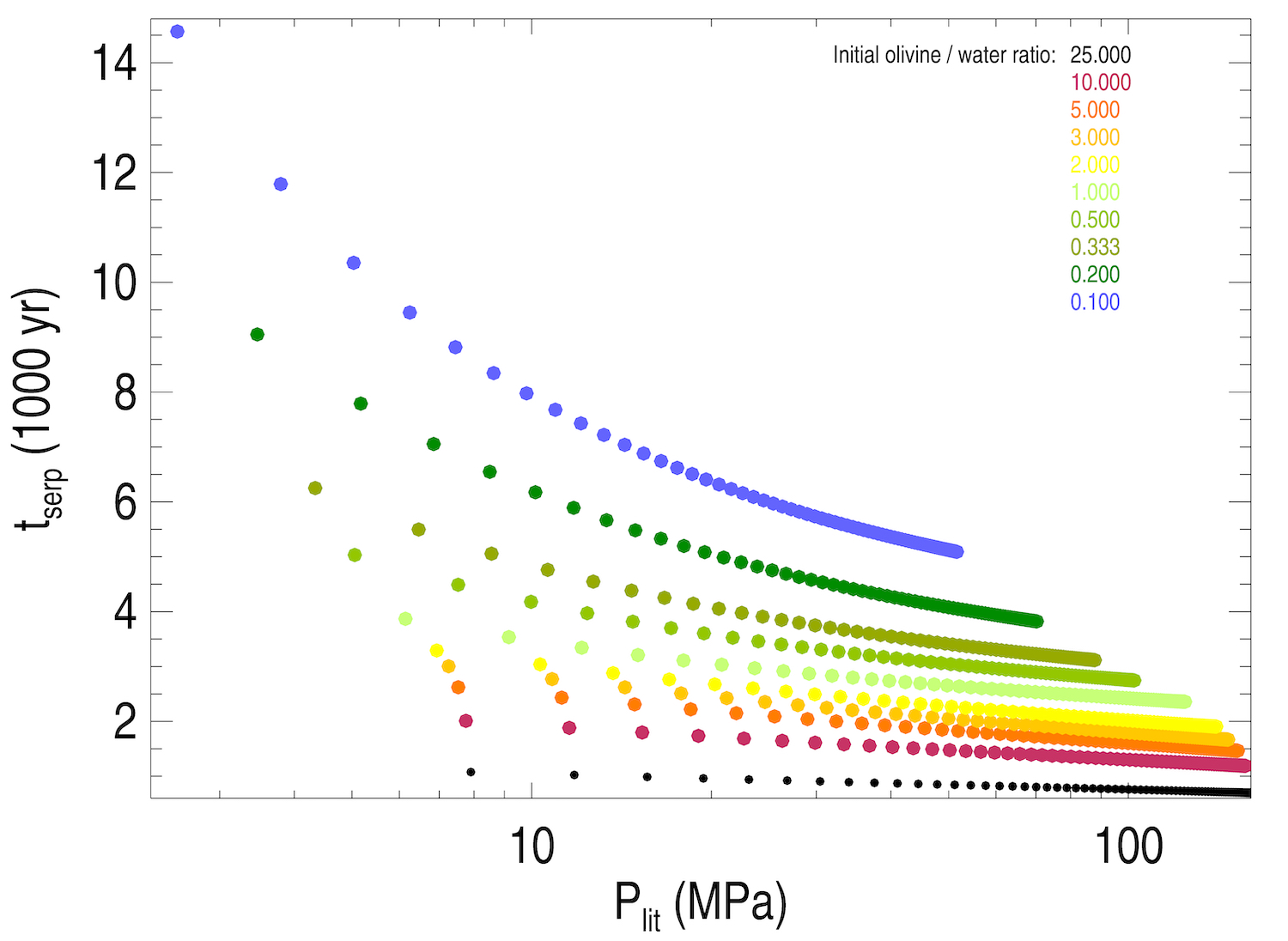
Figure 3: The critical temperature (left panel) and the serpentinzation time (right panel) as a function of the pressure in case of 10 different olivine to water ratio (the colors show the different compositions).
In the case of a high olivine-to-water ratio, the reaction is fast because the water runs out quickly, thus it can achieve only a little temperature increase during the process (Fig. 4). We would expect the fastest reaction with the highest temperature rise at the stoichiometric rate but since a significant part of the process takes place below the freezing point of water, which has yet to melt, and the amount of interfacial liquid water involved in the reaction depends on the amount of rock and the temperature.
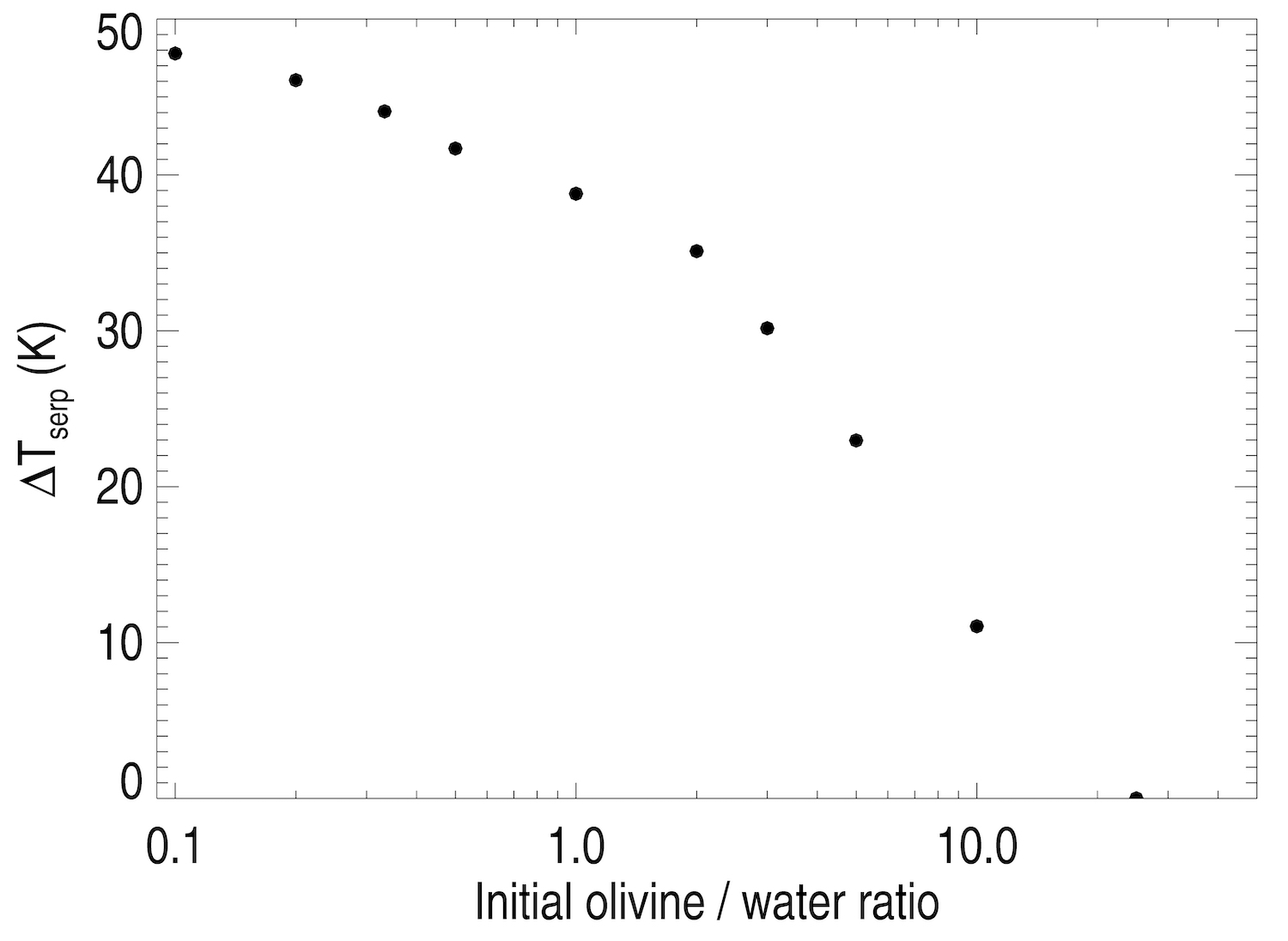
Figure 4: Temperature increase (ΔT) during the serpentinization process as a function of the olivine to water ratio under the same pressure.
Our results show that the serpentinization process can proceed under a wide range of initial conditions in the planetesimals in the early Solar System and can efficiently reform the interior of these bodies.
How to cite: Farkas-Takacs, A. and Kiss, C.: Dependence of serpentinization efficiency on the initial conditions of planetesimal formation in the early Solar System , Europlanet Science Congress 2022, Granada, Spain, 18–23 Sep 2022, EPSC2022-977, https://doi.org/10.5194/epsc2022-977, 2022.

